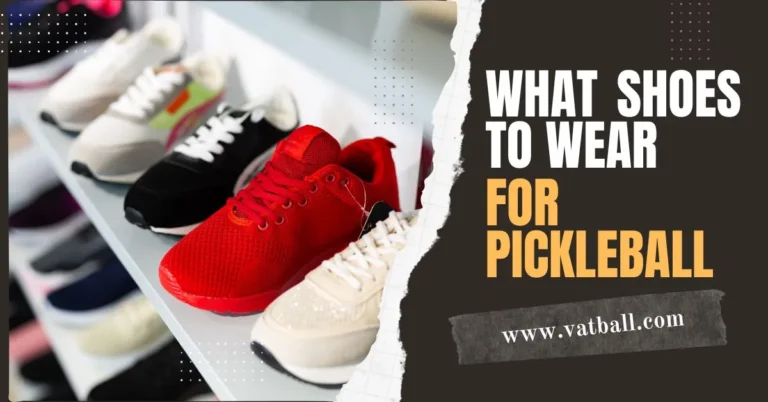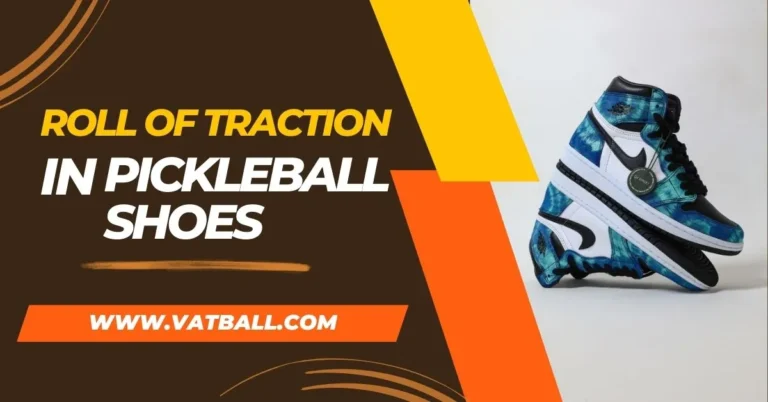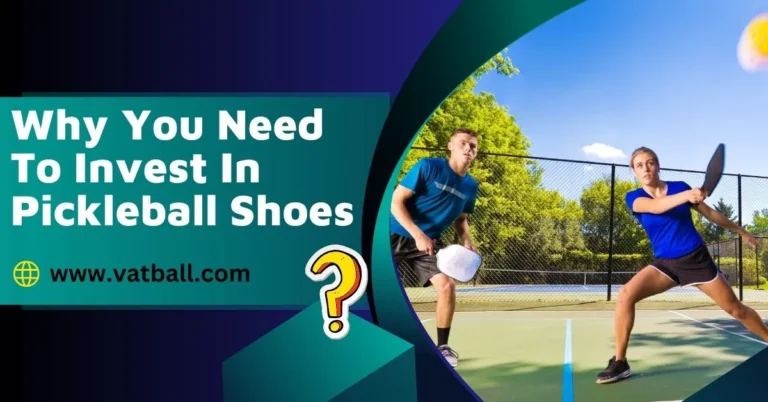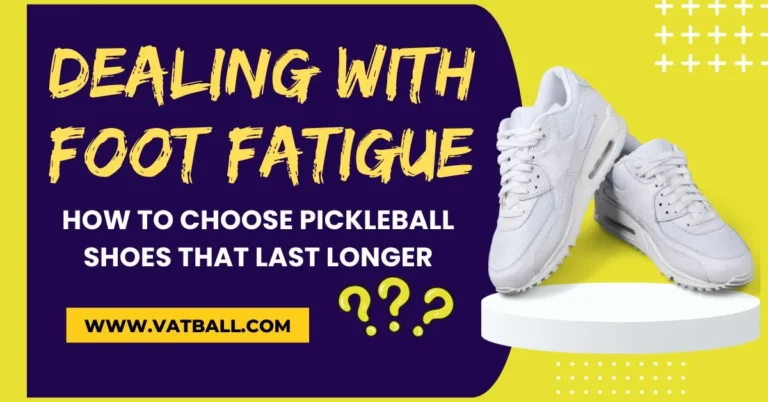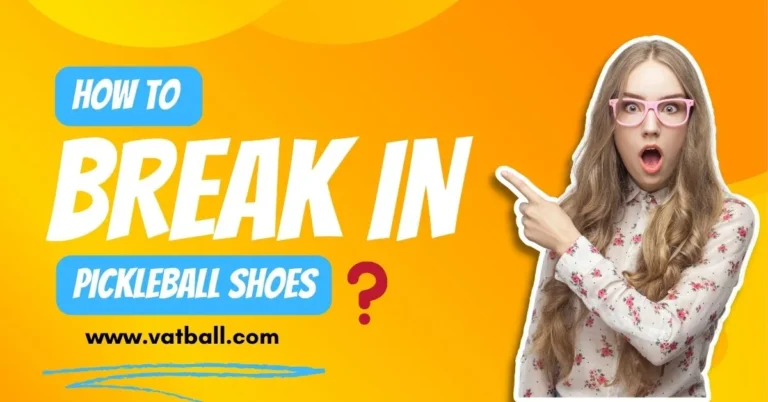Pickleball Shoes Causing Blisters? Tips for Prevention and Relief
As a competitive player, all your focus goes into practice, diet, and equipment for the game. But you also need to be more aware of the possible injuries. In the case of pickleball, blisters are the most common type of observed injury like knee pain. The thing is, they can be easily avoided if players take a few precautionary measures while playing pickleball.
The first thing you need is footwear with a perfect fit and support. Next, you need the right type of socks to prevent sweat and moisture from affecting your game. You must also be mindful of friction, as it is the driving force behind blisters.
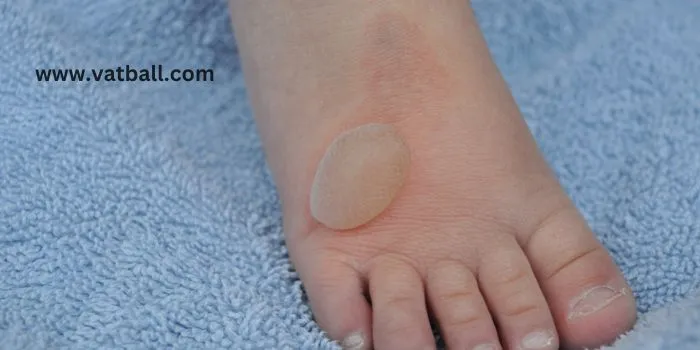
In this guide, I will talk more about what to do to prevent blisters. I have learned these techniques throughout my years of experience in pickleball, and trust me, following these tips will minimize the risk of getting blisters. Let’s get started.
Start with the Right Fit
Your feet are the foundation of a tall and strong structure. They require the right footwear to support you in the pickleball courtroom. Here’s the thing: avoid being tempted by the convenience of online purchasing, especially for something as important as your shoes. Take a little trip to the store where the professionals are. These specialists aren’t just there to make a sale; they’re there to ensure your comfort and overall performance.
They’ll measure your feet correctly, not just the length but the width too – because both are counted. Then, they’ll watch how you walk. It might seem like a simple thing, but it tells them a lot about your foot movement. It’ll help them recommend shoes that match your particular style of movement.
Now, after they suggest a pair, don’t simply nod and smile. Try them on. Walk around the store and mimic some pickleball movements. Pay attention to how your feet feel in the footwear. Are they comfy but not tight? Do your feet have some wiggle room? Does the arch of your foot feel supported? These are the questions you need to be asking yourself.
Remember, it’s not just about getting a good fit; it is about getting Your Fit. Everyone’s feet are specific, and what works for someone else may not be right for you. A shoe that feels tailor-made for your feet is your ticket to blister-free pickleball.
Select the Socks Carefully
Let’s talk about socks. In pickleball, or any other sport for that matter, your choice of socks could make a world of difference. It’s not just about fashion; it’s about practicality and comfort.
First things first, ditch those ordinary cotton socks for pickleball games. Why? Regular cotton socks don’t work that well with all that moisture. Your feet feel like they are swimming in a puddle. And where would blisters thrive the most? You guessed it – warm, wet environments.
So, what’s the solution? Invest in moisture-wicking socks. These little wonders are like magic on your feet. They remove moisture, keeping your feet dry and decreasing the friction between your skin and the shoe. Less friction means fewer blisters – it is as simple as that.
Now, when you purchase socks, look for materials like acrylic or specific sports performance fabric. These materials are perfect to keep your feet cool and dry. They’re designed to undergo the warmth, sweat, and movement of severe activities like pickleball. Plus, some socks even include extra cushioning in all the needed locations, giving your feet the support and comfort they crave throughout the sport.
Fight Friction with Care
Now, let’s talk about the very cause of those blisters: friction. When your feet rub together vigorously, all through the pickleball games, they create friction. And guess what? Friction is a blister’s best friend.
So, how do you prevent this? Use blister prevention products like ENGO Blister Prevention Patches. These patches act as shields, reducing the strain, friction, and stress that your pores and skin experience in the sport. They create a barrier between your pores and the shoe, minimizing the chances of blisters forming.
Think of these patches as your secret weapon, your armor on the pickleball battlefield. They’re designed to stay put, providing non-stop protection without you even noticing they are there. By strategically setting these patches in areas vulnerable to blisters, you’re reducing the friction effect.
The beauty of this solution lies in its simplicity. No complex exercises, no fancy gadgets – just a small, effective patch that stands between you and those bothersome blisters.
Master the Art of Lacing
There’s a small but amazing detail that can make a large difference to your experience in pickleball: the way you lace up your shoes. It might appear insignificant, but trust me, knowing how to do laces the right way can prevent blister issues.
First things first, avoid extremes. Don’t lace them up so tight that your feet feel like they are in prison. Likewise, don’t go for free; your footwear shouldn’t feel like flip-flops. The secret is finding that sweet spot – comfy enough to offer support but with room for your feet to breathe and move naturally.
Now, if your shoes are rubbing against a specific spot, pay attention. That’s where strategic lacing comes in. Different lacing techniques could relieve stress points. For example, if the top of your foot feels too tight, you can skip a lace hole or two to ease the pressure.
And here’s a pro tip: Have you ever heard of Ian’s Shoelace Site? It’s a gold mine of shoelace techniques. There are more than 50 ways to tie your shoes, each catering to exclusive foot shapes and comfort levels. It’s like having a private shoelace guru at your fingertips.
How Foot Deformities Affect the Game
Foot deformities are like rocky terrain for your otherwise clean pickleball game. They create additional strain points, making you more at risk of blisters. But fear not; there is a way to address this issue.
First, if you suspect you have any of these conditions, e.g., bunions, hammertoes, or other protrusions, don’t ignore them. Consulting a podiatrist is your ticket to a more comfortable game. These specialists are wizards for your feet. They can suggest custom solutions, from specifically designed footwear to cushioned inserts tailored to your foot’s unique form.
Now, addressing foot deformities isn’t just about comfort; it’s about overall performance too. By getting an expert recommendation, you may optimize your shoes, making sure they don’t worsen the situation during your game.
Remember, everyone’s feet are different, and what works for one may not work for another. So, invest the effort and time to deal with your foot deformities well. When your feet are happy, you can focus on dominating the game. It’s not just about preventing blisters; it’s about playing your best game.
Act Fast on Hot and Itchy Spots
If you’re in the middle of an extreme pickleball match and all of a sudden you feel a warm, reddened area on your foot, stop and pay attention. Hot spots are signs of blisters, and if you act on them soon enough, you could prevent a full-blown catastrophe.
Here’s the trick: Don’t ignore them. When you feel a warm spot, your feet tell you, “Hey, something’s not right here!” Take action right now. Use a friction-reducing patch or any other blister-prevention product you have. These patches work wonders at lowering stress and stopping blisters from forming.
It’s a preventative approach to keeping your feet in the game. By responding to these warm spots early, you’re basically cutting out the root cause of the problem. It’s like setting out a tiny spark before it turns into a raging fire.
What to do If You Have Blisters
Let’s talk damage control what to do when you get a blister. It might seem like an end to a game, but don’t worry; there are ways to deal with blisters effectively and get back on the court pain-free and ready to play.
First off, resist the urge to pop that blister. I know it’s tempting, but trust me, it’s a dangerous thing to do. Popping a blister can lead to infection and more pain. Instead, if the blister bursts on its own, leave the skin intact. It acts as a natural bandage, protecting the sensitive area underneath.
Now, for those blisters that remain covered, here’s the plan: pad them up. Gently place some sterile gauze over the blister, creating a gentle cushion. Then, wrap it up with athletic tape. This padding not only protects the blister but also reduces the friction, letting it heal without further burning.
And after your game, let your blister breathe. Remove the padding and expose it to the air. This drying-out period is like therapy for your blister. Fresh air promotes healing, assisting the blister to close up and mend.
Remember, endurance is key here. Blisters might look like a small thing, but they demand attention. Give them the care they want, and they’ll heal faster, allowing you to return to the game earlier than you think.
FAQs
What shoes to wear to stop blisters in FPickleball?
The best pickleball footwear for stopping blisters fit well and provide ample support. It’s important to go to a footwear store yourself, get your feet measured, and invest in high-quality shoes recommended by professionals. Look for footwear with moisture-wicking properties, and try to use ENGO Blister Prevention Patches for added protection.
What type of socks to wear to prevent blisters in Pickleball?
Wear moisture-wicking socks, such as those crafted from acrylic or specialized sports performance fabrics. These can significantly reduce the chance of blisters. These socks keep your feet dry by repelling moisture, minimizing friction, and imparting greater comfort during extreme games.
How to prevent blisters in Pickleball with foot deformities?
If you’ve got foot deformities, you should seek advice from a podiatrist. They can recommend custom solutions, including specially designed shoes and cushioned inserts tailor-made to accommodate your foot’s shape. Customizing your footwear with expert guidance can reduce the chance of blister formation and discomfort.
What should I do if I get a Blister during a Pickleball game?
If a blister forms, avoid popping it. Otherwise, it can result in an infection. Instead, pad the blister with sterile gauze and wrap it with athletic tape for safety. After the healing, remove the padding and allow the blister to dry out, resulting in a faster recovery. Patience and proper care are vital for effective blister management.
Conclusion
On the off-chance that you do get a blister, you need to stop it immediately by following the precautions. To prevent them in the future, decide on the right footwear and socks to address foot deformities and gain knowledge of lacing strategies. Strategic measures can make a sizable difference.
By staying alert and up-to-date, players can step onto the court, focusing solely on their game, without the concern of blisters slowing them down. Play smart, play conveniently, and keep the pickleball spirit alive!

